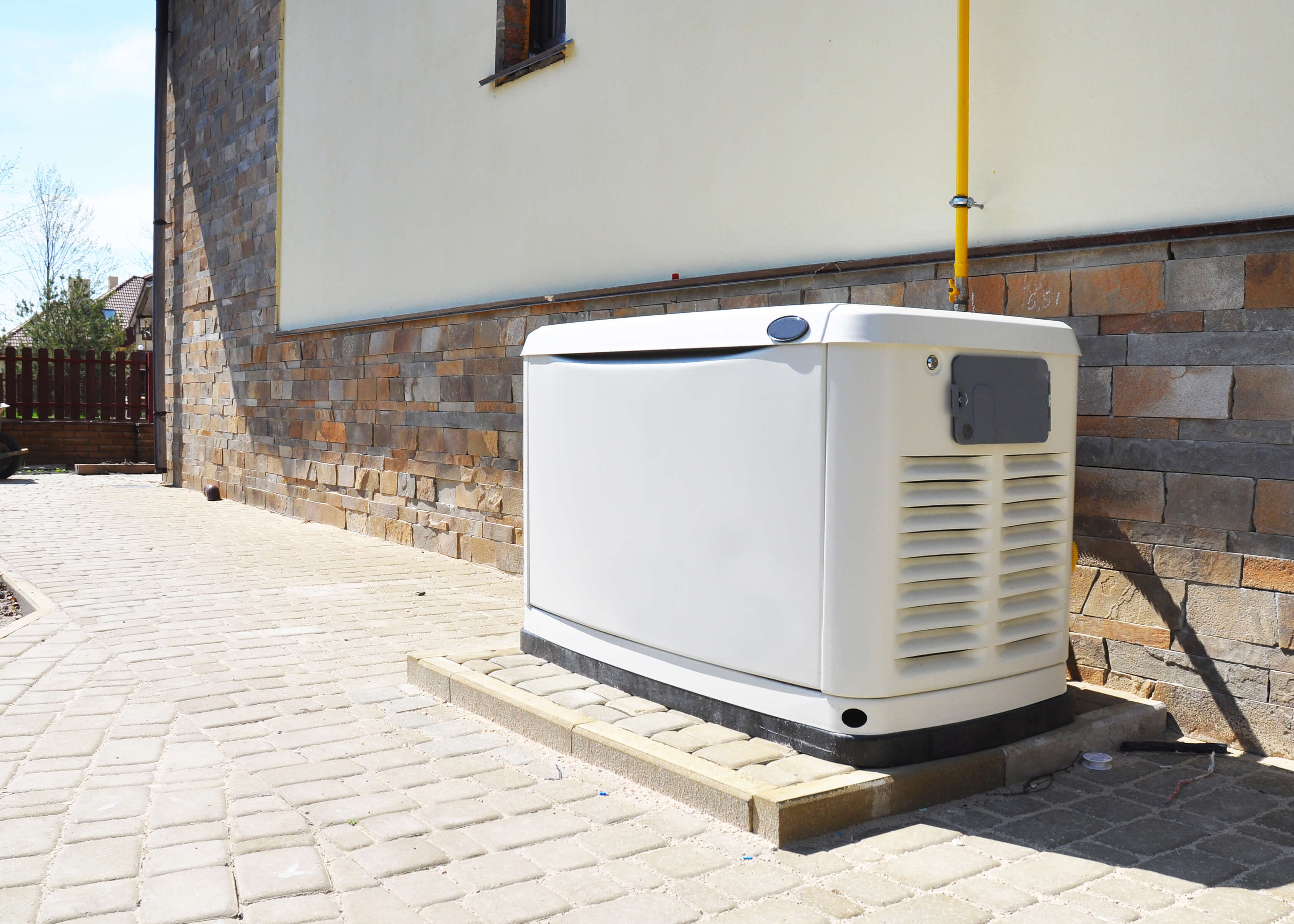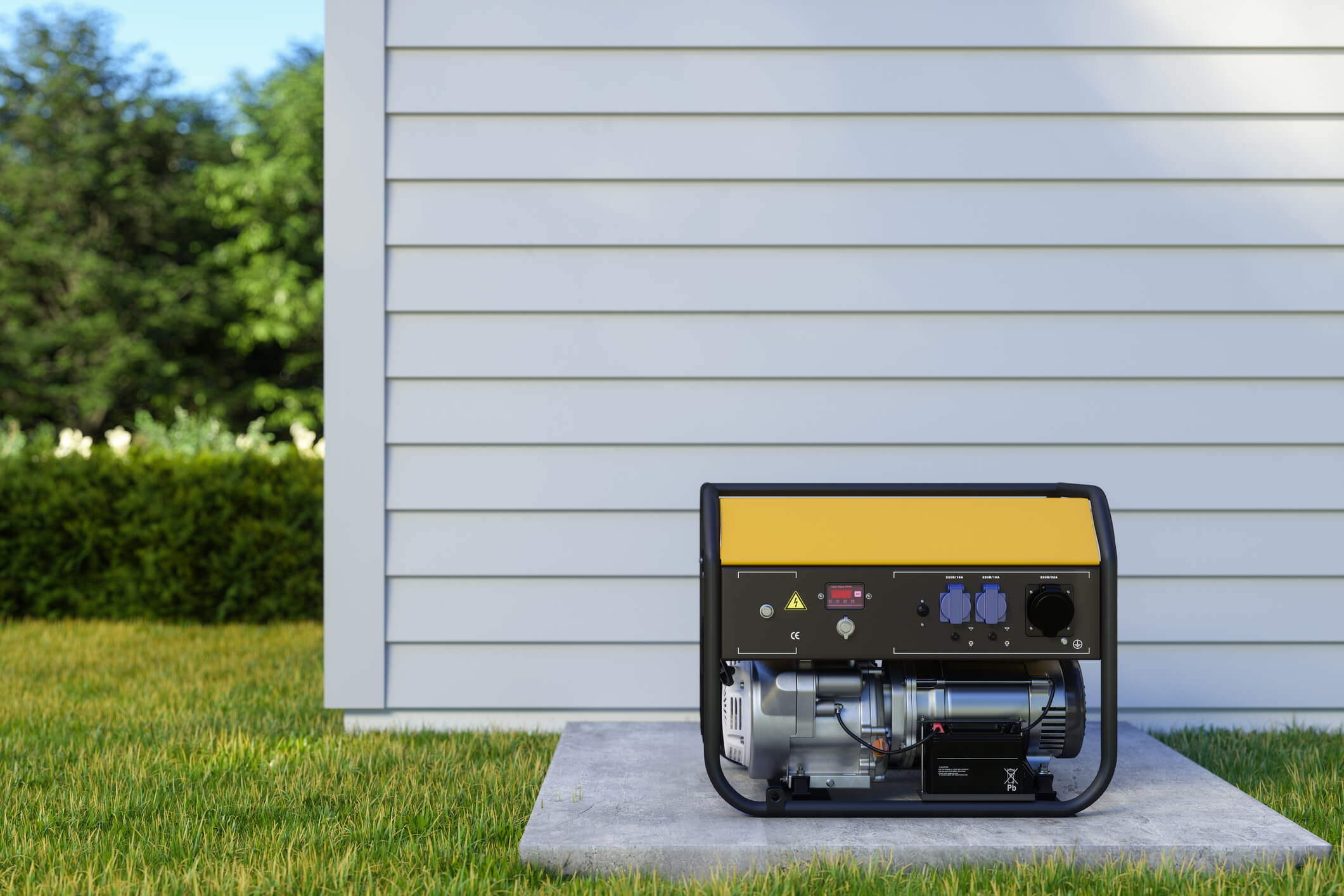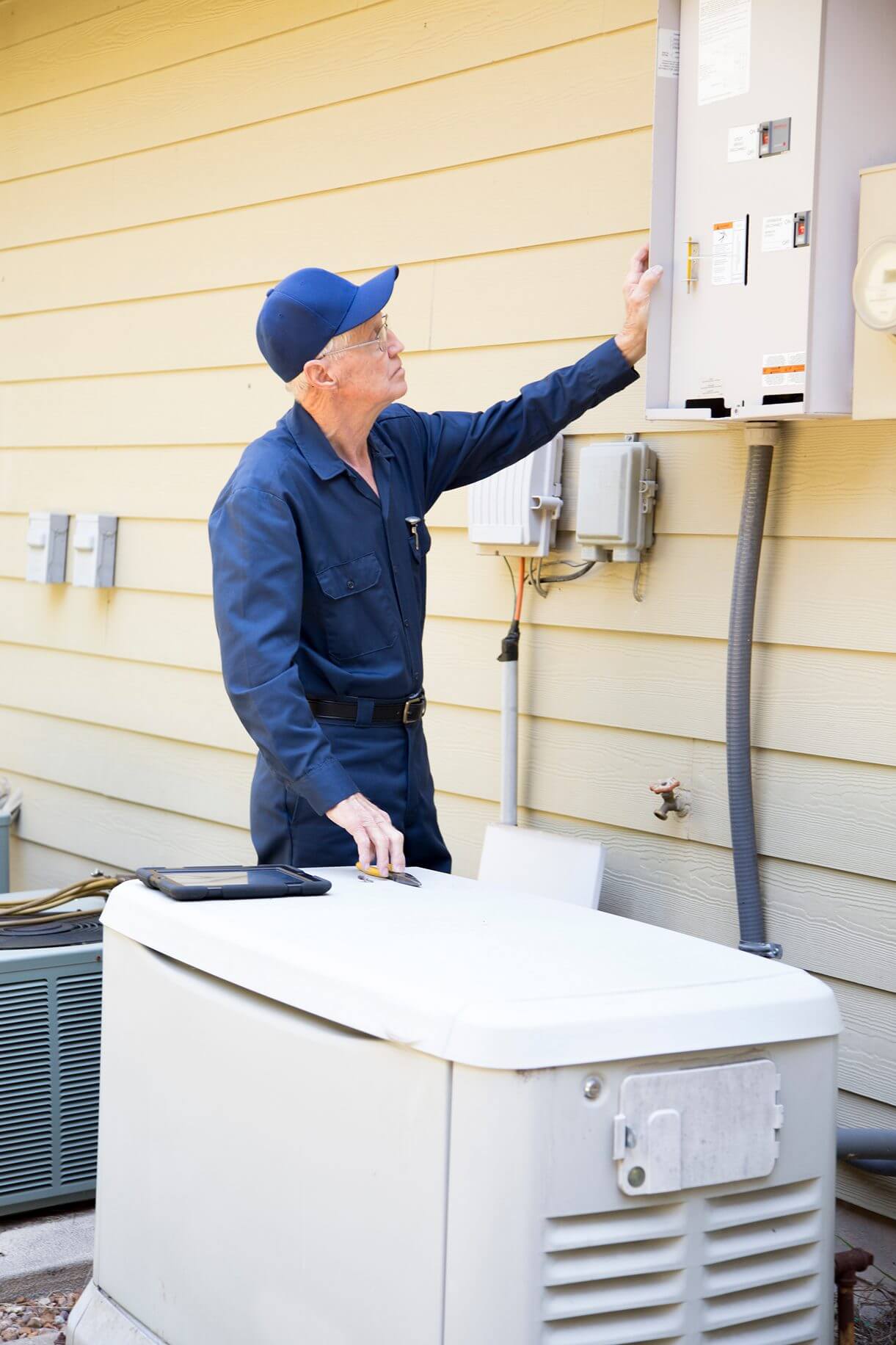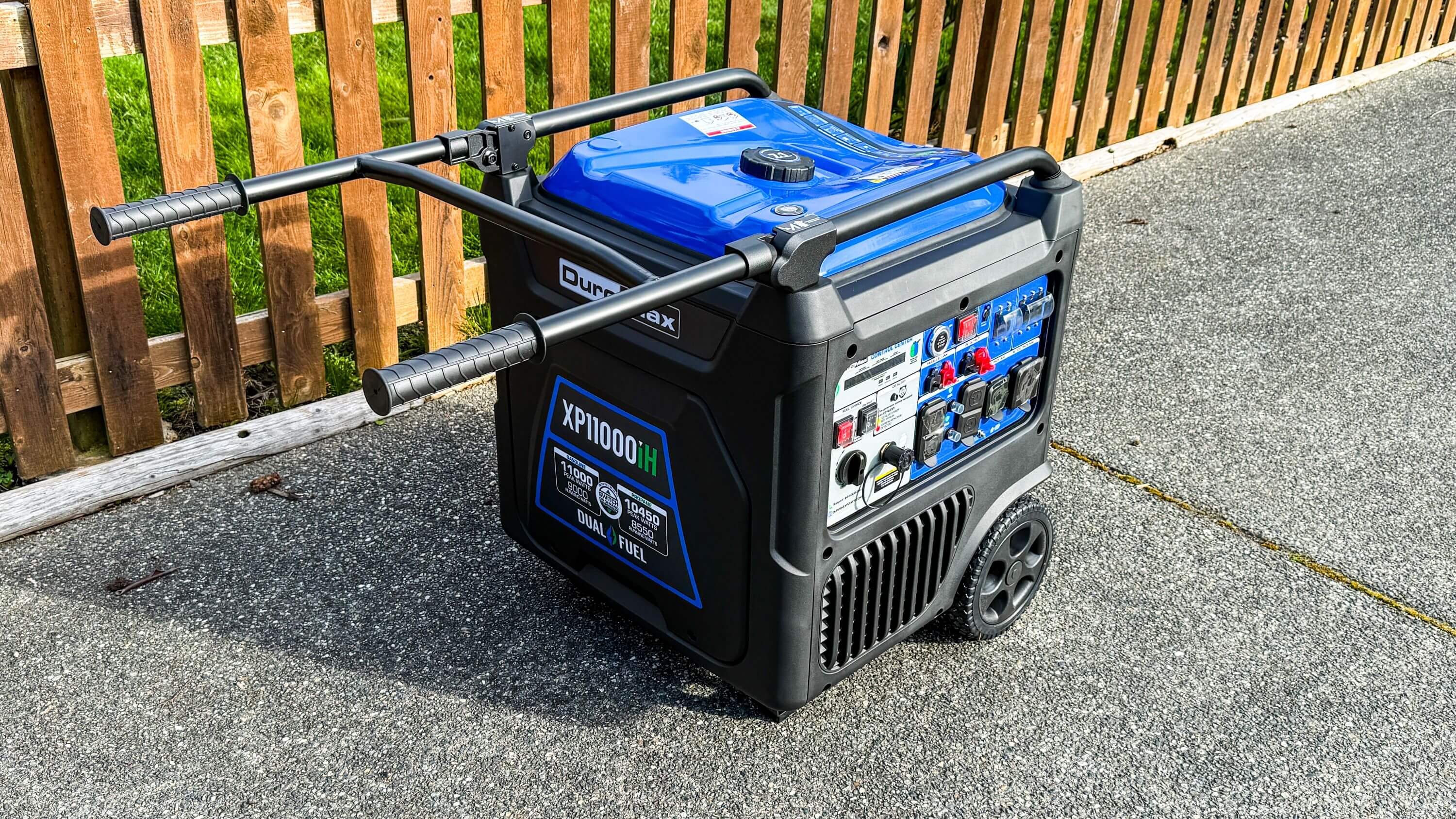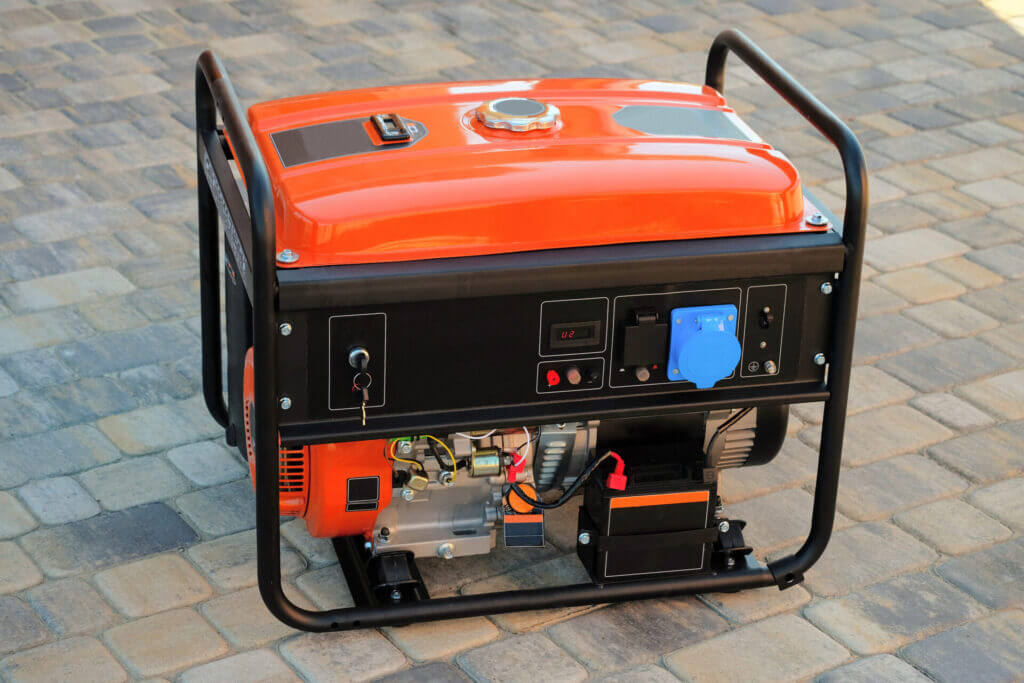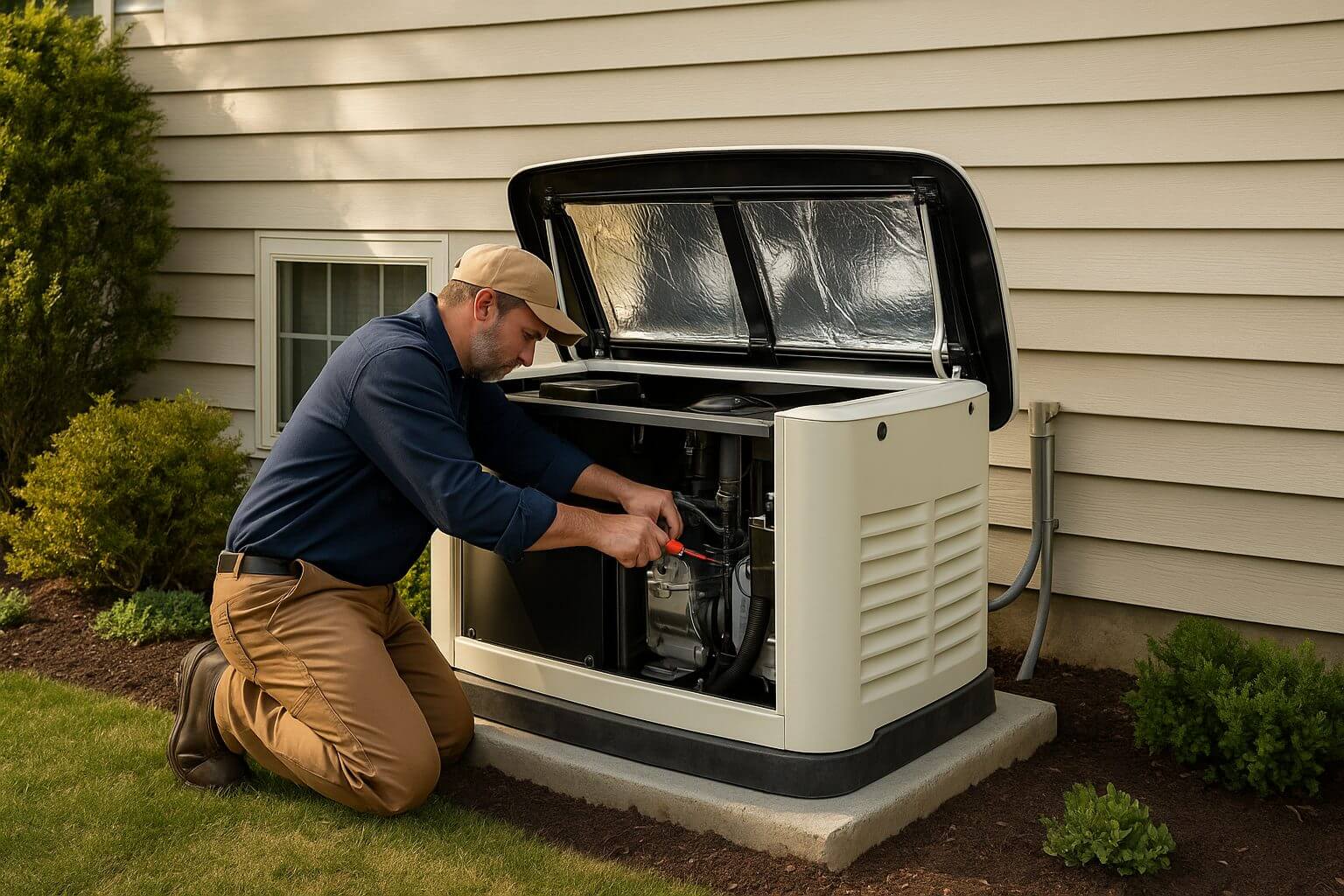What Is a Standby Generator?
A standby generator is a permanently installed backup power system that automatically provides electricity to your home during an outage. Connected directly to your home’s electrical panel and fueled by natural gas or propane, it detects power loss and starts within seconds—keeping lights, appliances, and critical systems running without any manual setup.
Unlike portable generators, which require refueling and extension cords, standby models operate continuously as long as fuel is available. They’re equipped with an automatic transfer switch that safely disconnects your home from the utility grid, preventing dangerous backfeeding and ensuring a seamless transition when power is restored.
Standby generators are best for homeowners who want reliable, hands-free protection from power interruptions. They’re especially valuable in areas prone to severe weather or frequent outages, or for households that depend on consistent power for medical equipment, sump pumps, or home offices. Though they require a higher upfront investment, their long lifespan and automatic operation make them one of the most dependable home upgrades for comfort and peace of mind.
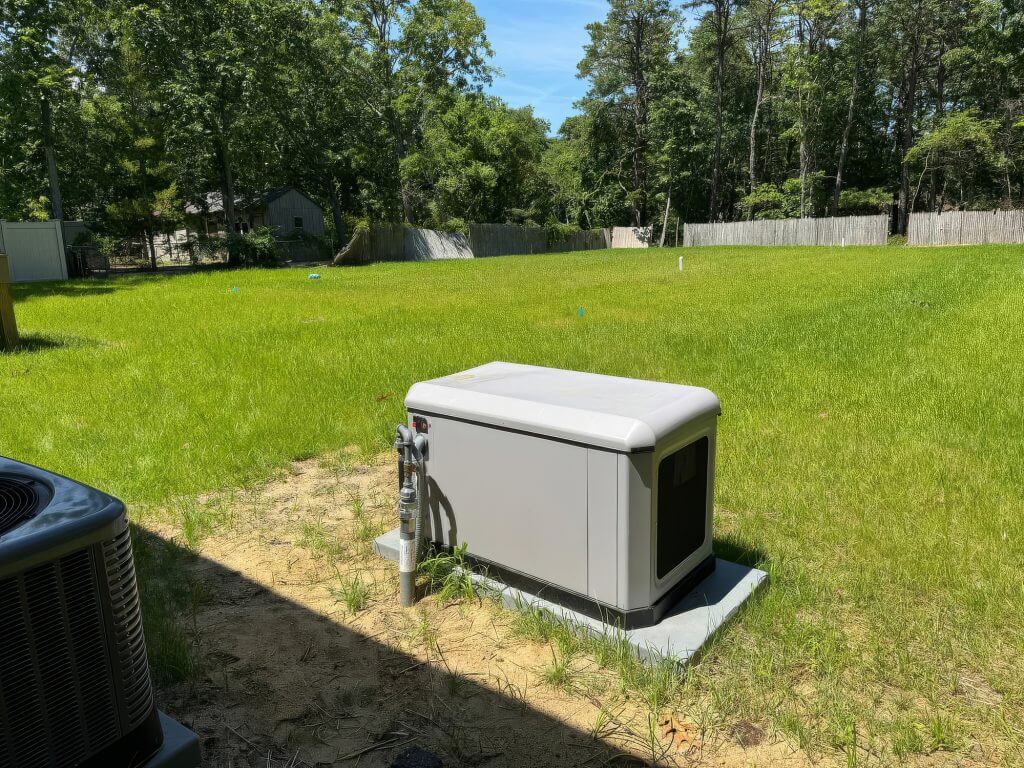
Why Standby Generators Cost More — and Why They’re Worth It
Standby generators are permanently installed, automatic backup systems that provide whole-home power during an outage. They start within seconds, run on natural gas or propane, and can operate for days or weeks if fuel is available.
This level of reliability and convenience means they’re more expensive than portable options, but for many homeowners — especially in outage-prone areas — the peace of mind is worth every penny.
Average Standby Generator Costs
| Cost Component | Price Range | Notes |
|---|---|---|
| Generator Unit | $5,000 to $15,000 | Price varies by size (kW) and brand. |
| Installation | $3,000 to $8,000 | Electrical, plumbing, permits, site prep. |
| Transfer Switch | Included or $1,500 to $3,000 | Often built into total installation quote. |
| Total Installed Cost | $8,000 to $23,000 | Most homeowners fall in this range. |
Ongoing Costs to Consider
A standby generator is not a one-time expense — it’s a system that requires upkeep to stay reliable. Here’s what to plan for:
- Natural Gas: Runs continuously as long as the gas supply is uninterrupted. Cost depends on local utility rates and length of outages.
- Propane: Requires refilling tanks; cost fluctuates seasonally. Large tanks allow longer runtimes but require higher initial investment.
- Example: A 22 kW generator running at 50% load may consume 2 to 3 gallons of propane or 250 to 300 cubic feet of natural gas per hour.
Maintenance
- Expect to budget $200 to $600 per year for routine service.
- Includes oil and filter changes, spark plug replacements, air filter changes, and inspections.
- Annual or semi-annual checkups by a certified technician ensure compliance with warranty requirements.
Repairs
- Most common repairs involve starter motors, control panels, or fuel system components.
- Minor fixes may cost $200 to $400; more complex issues can reach $1,500+.
Battery Replacement
- The starting battery for an automatic generator typically lasts 2 to 4 years and costs $100 to $300 installed.
Warranty Extensions
- Extended warranties range from $200 to $1,000 depending on coverage length and brand.
Ways to Save on a Standby Generator
- Right-Size Your System
- Don’t overpay for unused capacity — match generator size to essential circuits or specific high-priority zones in your home.
- A smaller unit with a load-shedding transfer switch can often meet needs at a lower cost.
- Shop Off-Season
- Prices and installer availability are often better in spring and fall, before peak outage seasons.
- Get Multiple Quotes
- Compare at least 3 licensed installers. Ask for a breakdown of equipment, labor, permits, and materials so you can negotiate effectively.
- Bundle With Other Projects
- Combining generator installation with electrical panel upgrades, HVAC replacements, or landscaping work may reduce labor costs.
- Look for Rebates & Incentives
- Some utility companies and state programs offer rebates for standby systems, especially when paired with energy-efficiency upgrades.
- Choose Propane if Gas Lines Aren’t Available
- In rural areas, propane may be more cost-stable than extending a natural gas line. Bulk purchases can lock in lower rates.
- Regular Maintenance
- Staying on top of upkeep reduces repair bills and extends lifespan, protecting your investment.
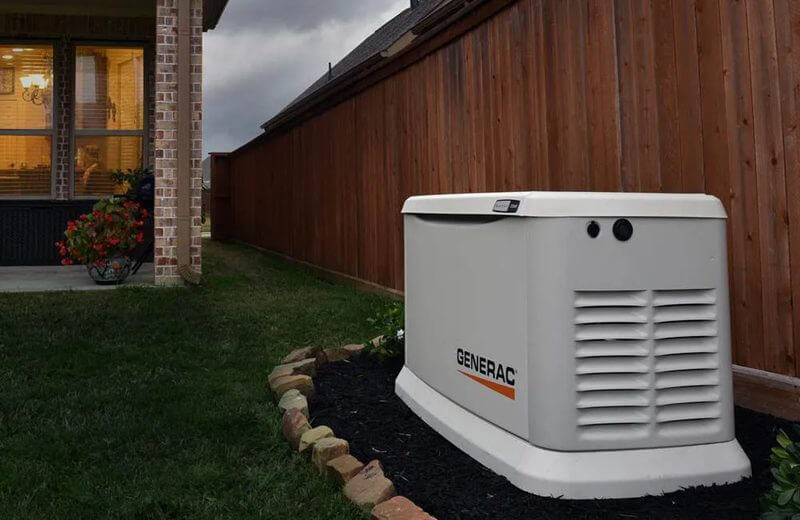
Final Thoughts
A standby generator is a long-term home investment. While the average cost of $8,000 to $23,000 installed may feel steep, the benefits, like automatic operation, full-home coverage, and reliability, make it the preferred choice for homeowners who value peace of mind during outages.
By carefully sizing your system, shopping strategically, and keeping up with maintenance, you can maximize both the value and lifespan of your standby generator, ensuring it’s ready to perform when you need it most.
Compare top-rated generators pros in your area.
Read real homeowner reviews, explore qualifications, and view promotions. Modernize makes it easy to browse professionals and find one that will be perfect for your project.
